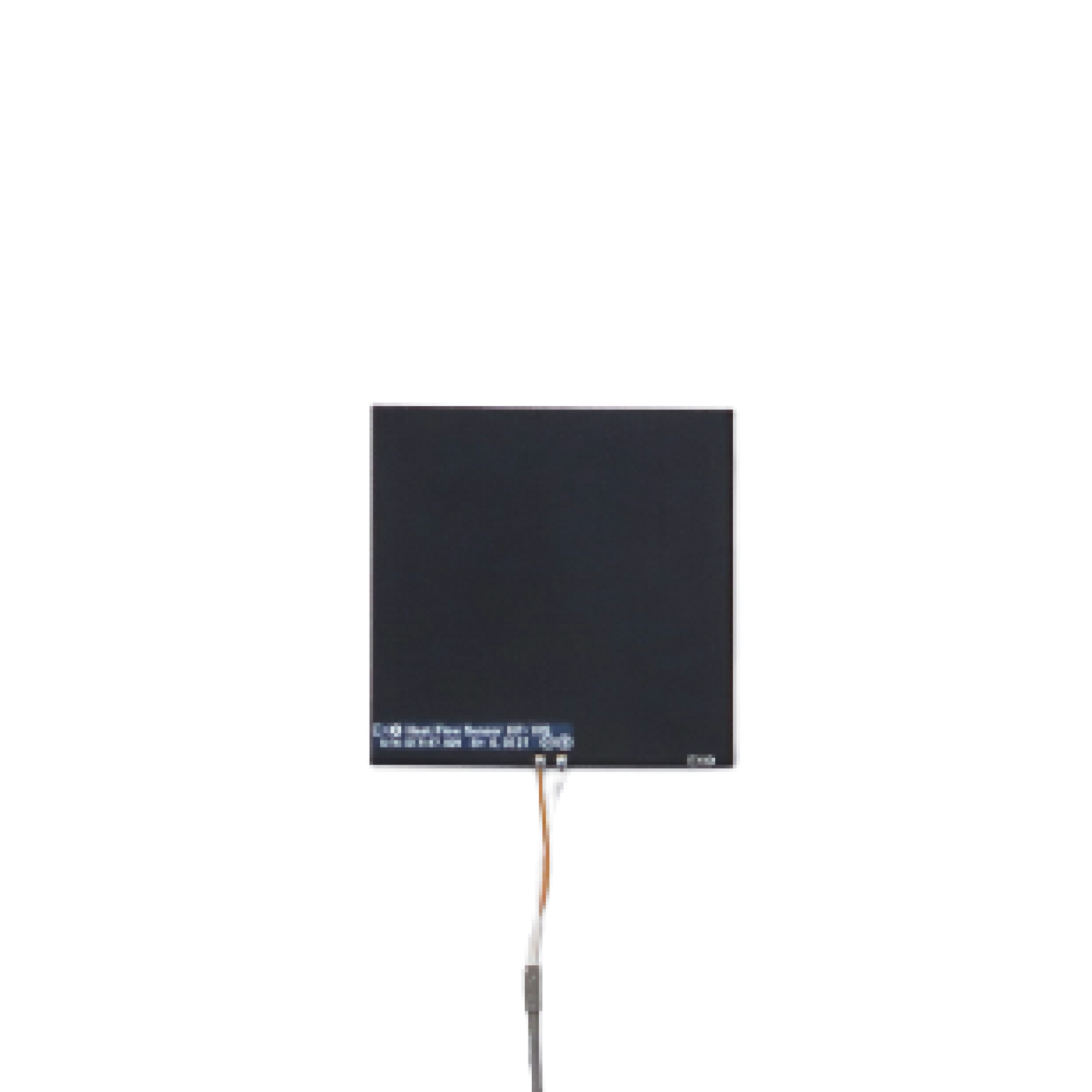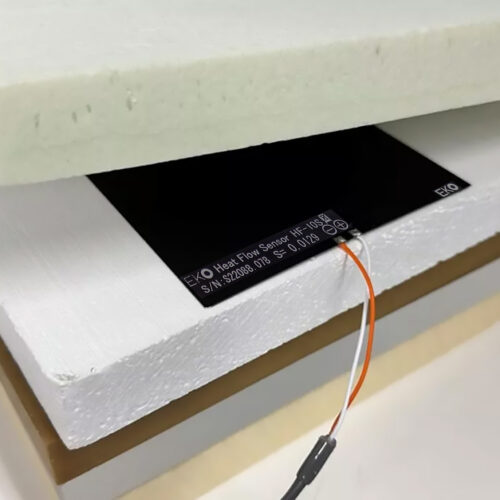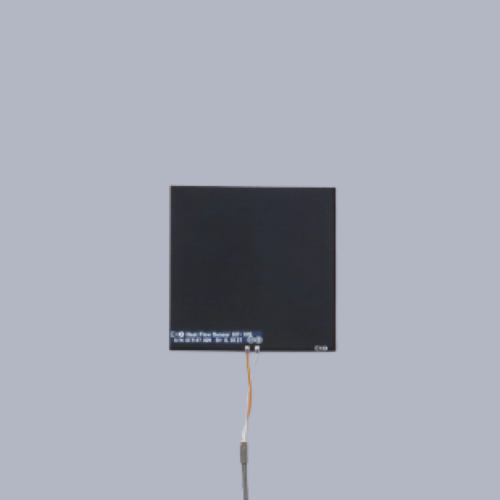HF-10S
Heat Flux Sensors

Thinnest plate sensor
The HF-10S, at only 0.5mm thick, is a super-thin option for applications where the sensor’s thermal resistance must be minimal, ideal for a variety of research applications and manufacturing control processes.

HF-10S
A heat flux sensor is a thermopile, an electronic device that translates thermal energy into an electrical voltage proportional to the temperature gradient across its thermocouples’ hot and cold junctions.
EKO Instruments offers a selection of thin substrate heat-flux sensors in a range of different sizes and thicknesses, an ideal option for research and engineering applications as well as manufacturing control and monitoring processes.
At only 0.5mm thick, the HF-10S is super-thin and weather-proofed, with incredibly low thermal resistance, making it an ideal option for research applications and manufacturing control processes.
Key Features:
- Low thermal resistance
- Super-thin 0.5mm profile
Accessories
Frequently Paired Together
| Response time 95% | 25 sec |
|---|---|
| Sensitivity (Approx.) | 12 µV/W/m² |
| Thermal resistance | 0.0016 °C/(W/m2) |
| Electric Resistance (Room Temp.) | 50 to 100 Ω |
| Operating temperature range | -20 to 120 °C |
| Cable length | 10m ( 20m / 30m ) |
| Dimensions mm | 100 (L) x 100 (W) x 0.5 (H) |
| Weight (without cable) | 0.012 kg |
| Substrate | Glass epoxy |
| Cladding | Epoxy |
| Ingress protection | – |
Contrary to popular belief, Lorem Ipsum is not simply random text. It has roots in a piece of classical Latin literature from 45 BC, making it over 2000 years old. Richard McClintock, a Latin professor at Hampden-Sydney College in Virginia, looked up one of the more obscure Latin words, consectetur, from a Lorem Ipsum passage, and going through the cites of the word in classical literature, discovered the undoubtable source. Lorem Ipsum comes from sections 1.10.32 and 1.10.33 of “de Finibus Bonorum et Malorum” (The Extremes of Good and Evil) by Cicero, written in 45 BC. This book is a treatise on the theory of ethics, very popular during the Renaissance. The first line of Lorem Ipsum, “Lorem ipsum dolor sit amet..”, comes from a line in section 1.10.32.
The standard chunk of Lorem Ipsum used since the 1500s is reproduced below for those interested. Sections 1.10.32 and 1.10.33 from “de Finibus Bonorum et Malorum” by Cicero are also reproduced in their exact original form, accompanied by English versions from the 1914 translation by H. Rackham.



